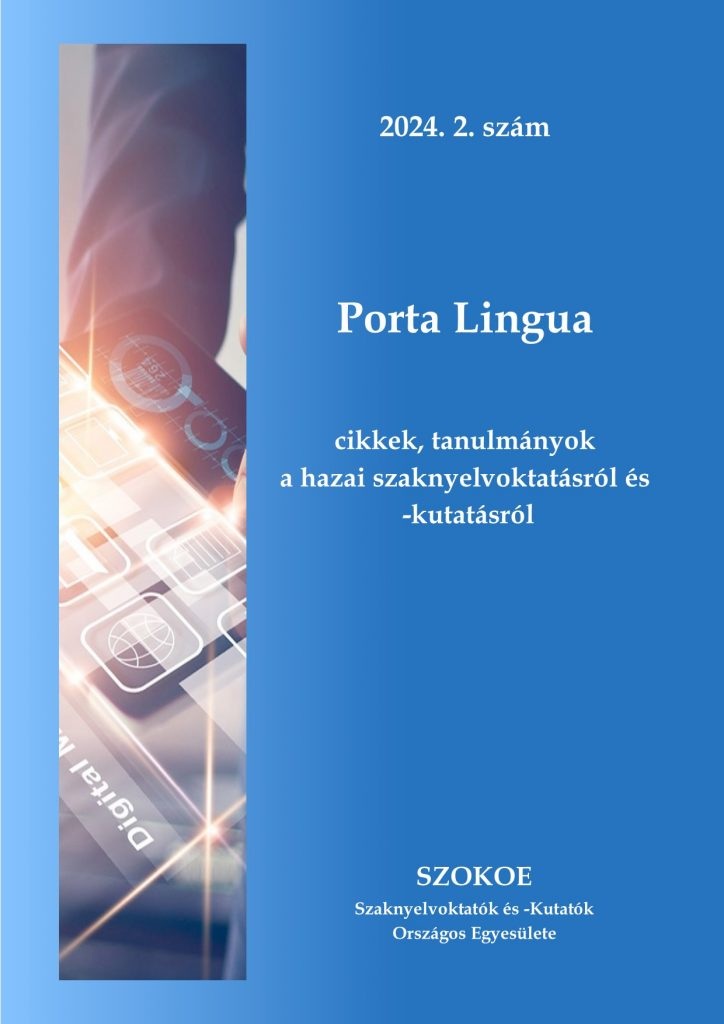Modality in Official Letters based on a Medical English Learner Corpus
Abstract
Learner corpora are systematic, electronic collections of texts produced by second language learners of a language, which may play an important role in second language acquisition. This study undertakes to investigate modality in the UPMS Learner Corpus of Official Letters. The corpus contains official letters written by students learning medical English at level B2. The data were examined with the help of the Sketch Engine software. The results show that students mainly use modal auxiliaries to express modality. The most commonly used modal auxiliary was ‘would’ with 157 occurrences, mainly in the structures ‘I would like to’ and ‘I would be grateful if you could’. The second most frequent modal auxiliary in the corpus was ‘could’, and other commonly occurring modal auxiliaries include ‘will’ to express future, ‘can’ to express possibility and ‘have to’ to express necessity. Based on the results, it can be concluded that students most commonly express modality with memorized phrases including a modal auxiliary at level B2. However, they have acquired and use these expressions correctly. They pay less attention to other modal devices, such as modal adverbs, adjectives or ‘hedging’.
References
Collins, P. (2009): Modals and quasi-modals in English. Rodopi: Amsterdam DOI: https://doi.org/10.1163/9789042029095
Collins, P. (2023): Modals and Quasi Modals in English World-Wide. Journal of English Linguistics. 51/3. 265293. DOI: https://doi.org/10.1177/00754242231173720
Fillmore, C. J. (1968): The Case for Case. In: Bach, E. – Harms, R. T. (eds.) (1968): Universals in Lingiustic Theory. Holt, Rinehart: New York
Gilquin, G. (2020): Learner corpora. In: Paquot, M. – Gries, S. (eds.) (2020): A Practical Handbook of Corpus Linguistics. Springer: Cham. 283–303. DOI: https://doi.org/10.1007/978-3-030-46216-1_13
Granger S. (2008): Learner corpora. In: Lüdeling, A. – Kytö, M. (eds.) (2008): Corpus Linguistics. An International Handbook. Volume 1. Walter de Gruyter: Berlin & New York. 259–275.
Griffiths, P. (2006): An Introduction to English Semantics and Pragmatics. Edinburgh University Press: Edinburgh
Halliday, M. A. K. (1994): An Introduction to Functional Grammar. Edward Arnold: London
Huddleston, R. – Pullum, G. (2002): The Cambridge Grammar of the English Language. CUP: Cambridge. DOI: https://doi.org/10.1017/9781316423530
Jespersen, O. (1924): The Philosophy of Grammar. Allen and Unwin: London
Leech et al. (2009): Change in contemporary English: A grammatical study. CUP: Cambridge. DOI: https://doi.org/10.1017/CBO9780511642210
Lyons, J. (1977): Semantics I-II. CUP: Cambridge. DOI: https://doi.org/10.1017/CBO9780511620614
McEnery, T. – Xiao, R. – Tono, Y. (2006): Corpus-Based Language Studies: An Advanced Resource Book. Routledge: London and New York
Meunier, F. (2020): Introduction to Learner Corpus Research. In: Tracy-Ventura, N. – Paquot, M. (eds.) (2020): The Routledge Handbook of Second Language Acquisition and Corpora. Routledge: New York. DOI: https://doi.org/10.4324/9781351137904-4
Palmer, J. P. (1993): Mood and Modality. CUP: Cambridge
Saeed, J. I. (2003): Semantics. Blackwell: Oxford
Steele et al. (1981): An Encyclopedia of AUX: a study in cross linguistic equivalence. MIT Press: Cambridge
Stubbs, M. (1996): Text and Corpus Analysis: Computer Assisted Studies of Language and Culture. Blackwell: Oxford



